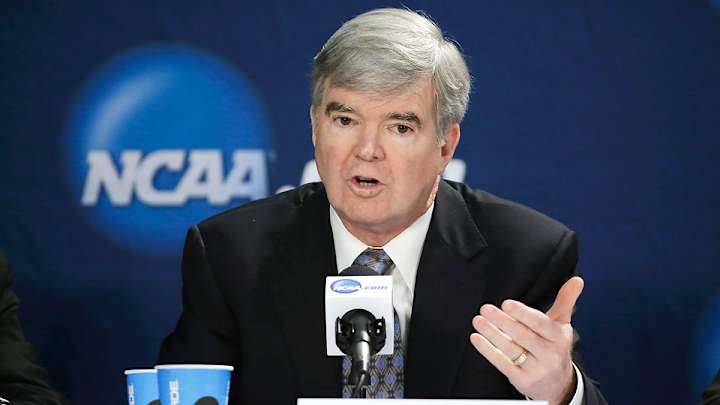NCAA releases new governance model with focus on Power Five autonomy

The NCAA announced changes to its governance model in a proposal Friday, moving closer to the Power Five autonomy that's been discussed as a major point of emphasis recently. In the new proposal, the five power conferences -- the ACC, Big Ten, Big 12, Pac-12 and SEC -- would need 60 percent and a majority from three of the five conferences or 51 percent and a majority from four of the five conferences to make decisions.
Previously the five major conferences needed a two-thirds majority to push changes through. As a result of the new proposal, decisions related to transfer rules were "removed from the autonomy list," a win for the other five FBS conferences, who wanted to keep transfer rules set at the division level. The Power Five conferences could regain autonomy on transfer rules if "substantial change" on transfers does not occur within two years of the new governance structure.

“The Division I membership overall and the steering committee in particular worked hard to create a structure that will allow the division to operate more simply and inclusively,” NCAA president Mark Emmert said in the official release. “It shows a clear commitment to support student-athletes and allow them not only a place at the table but a voice in the process.”
The Division I board of directors will vote on the proposal Aug. 7, and according to the release, if the proposal passes, conferences would be able to start voting on rule changes as early as Jan. 2015.
Autonomy is a word that's been thrown around a lot and was a sticking point during each of the major conferences' media days before last season. The conference commissioners often used their remarks to push for autonomy, frequently referencing the proposed stipends for athletes, which the other FBS conferences would theoretically have trouble paying.
At the Intercollegiate Athletics Forum in December 2013, Emmert said: "Everybody seems to understand what the high-budget schools need, and there's an increasing recognition of what the small-budget schools need," he said. "I think they're going to wind up in a pretty amicable place without anybody having to do threats or innuendos."
WIRE: OSU AD Gene Smith confident Power Five autonomy proposal will pass
Those "threats" and "innuendos" didn't stop, even recently. At the beginning of the SEC's four-day media days, commissioner Mike Slive suggested potential separation if the SEC (and the rest of the Power Five) didn't get the flexibility it needed to make reform.
"If we do not achieve a positive outcome under the existing big tent of Division I, we will need to consider the establishment of a venue with similar conferences and institutions where we can enact the desired changes in the best interests of our student athletes," Slive said. "It's important that the NCAA governance steering committee continue its support for autonomous decision making among the five conferences, including proper voting thresholds to allow for the enactment of meaningful change."
It's not out of the question that the Power Five split off down the road, but assuming the proposal passes, this increases the possibility of the NCAA staying together at least in the immediate future. In getting the autonomy it wants, the Power Five should be satiated – for now.
